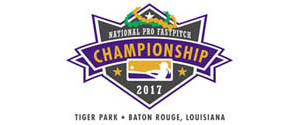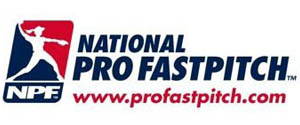The Umpire Corner
Force Play on Batter Runner
15 posts
• Page 1 of 2 • 1, 2
Someone forgot to tell NFHS that there is no force play at first base on a BR ... Pre Season Guide 2013, page 8, Collison Course
"For the strength of the pack is the wolf, the strength of the wolf is the pack" Rudyard Kipling
-

GIMNEPIWO - Posts: 4339
- Joined: Sat Sep 06, 2008 6:58 am
- Location: Between Rock & Hard Place
GIMNEPIWO wrote:Someone forgot to tell NFHS that there is no force play at first base on a BR ... Pre Season Guide 2013, page 8, Collison Course
Absolutely correct. Unfortunately, many associations use it as a matter of convenience and communication as many people are not aware of the definition of a force play.
- MTR
- Posts: 2317
- Joined: Thu Jan 03, 2008 5:21 am
MTR wrote:GIMNEPIWO wrote:Someone forgot to tell NFHS that there is no force play at first base on a BR ... Pre Season Guide 2013, page 8, Collison Course
Absolutely correct. Unfortunately, many associations use it as a matter of convenience and communication as many people are not aware of the definition of a force play.
When I showed my Asst Coach the Pre Season Guide ... ( She knew the language was wrong ) ... But then asked me what it technically was ... I mentally stumbled ... Is it just 'put out prior to reaching first base safely' ? Or something else ?
Last edited by GIMNEPIWO on Mon Feb 11, 2013 8:59 pm, edited 1 time in total.
"For the strength of the pack is the wolf, the strength of the wolf is the pack" Rudyard Kipling
-

GIMNEPIWO - Posts: 4339
- Joined: Sat Sep 06, 2008 6:58 am
- Location: Between Rock & Hard Place
Yep, it's just a "batter-runner being put out before safely reaching first base", or words to that effect. The rule that covers this is the one about runs scoring at the end of an inning. Paraphrasing here- the rules says something like, "No runs shall score when the third out of the inning is either: a) A force out, or; b) The result of the batter-runner not safely reaching first base".
Click Here >>> To Visit The Glove Shop On-Line
-

Bretman - Posts: 316
- Joined: Mon Mar 24, 2008 10:50 pm
Thanks guys ...
"For the strength of the pack is the wolf, the strength of the wolf is the pack" Rudyard Kipling
-

GIMNEPIWO - Posts: 4339
- Joined: Sat Sep 06, 2008 6:58 am
- Location: Between Rock & Hard Place
Can someone explain the difference in the play at 1st being a force play vs. runner being put out prior to reaching 1st?
There's obviously no difference as far as scoring runs when the 3rd out is made, as Bretman describes. And there's obviously no difference as far as not needing to tag the runner to get the out.
There's obviously no difference as far as scoring runs when the 3rd out is made, as Bretman describes. And there's obviously no difference as far as not needing to tag the runner to get the out.
- Fredegar
- Posts: 311
- Joined: Fri Feb 25, 2011 12:32 pm
Fredegar wrote:Can someone explain the difference in the play at 1st being a force play vs. runner being put out prior to reaching 1st?
Because the BR is not being forced off a base. Runners are not forced TO a base, but forced OFF or FROM a base.
If a trailing runner or batter runner is retired, a runner can always to back to a base. The BR has no base from which to be forced, nor one which to retreat.
- MTR
- Posts: 2317
- Joined: Thu Jan 03, 2008 5:21 am
Fredegar wrote:Can someone explain the difference in the play at 1st being a force play vs. runner being put out prior to reaching 1st?
There's obviously no difference as far as scoring runs when the 3rd out is made, as Bretman describes. And there's obviously no difference as far as not needing to tag the runner to get the out.
While treated similarly, the very definition of a "force out" excludes the batter-runner being one.
ASA: "Force Out: An out which may be made only when a runner loses the right to the base that the runner is occupying because the batter becomes a batter-runner, and before the batter-runner or a trailing runner has been put out."
NCAA: "Force Out: A putout in which an offensive player, who is being forced to advance, is either tagged out or put out by a fielder having and maintaining possession of the ball and touching the base to which the base runner is forced to advance. There cannot be a force out when the batter does not become a batter-runner, when a fly ball is caught, or after the batter-runner or a trailing base runner has been put out."
The batter isn't a runner occupying a base, and is therefore not forced by becoming a batter-runner. Please note the definitions DO NOT state that a force out is anytime a base can be tagged instead of the runner; that is a general misconception that leads to numerous erroneous arguments.
-

UmpSteve - Premium Member

- Posts: 461
- Joined: Fri Aug 21, 2009 10:38 am
UmpSteve wrote:... Please note the definitions DO NOT state that a force out is anytime a base can be tagged instead of the runner; that is a general misconception that leads to numerous erroneous arguments.
The usual misconception is when a runner is returning to a base left too soon on a caught fly ball. Any others?
-

PDad - Premium Member

- Posts: 3439
- Joined: Sun Mar 29, 2009 4:52 pm
PDad wrote:UmpSteve wrote:... Please note the definitions DO NOT state that a force out is anytime a base can be tagged instead of the runner; that is a general misconception that leads to numerous erroneous arguments.
The usual misconception is when a runner is returning to a base left too soon on a caught fly ball. Any others?
I've had this one a few times:
R1 on 2nd, R2 on 1st with 1 out. B4 singles, R1 scores, R2 misses 2nd on way to 3rd, throw is cut off, and B4 tagged out for 2nd out. Defense appeals R2 misses 2nd, and believes the run should come off the board because R2 was forced to 2nd. Correct ruling; R2 out on appeal, but the run DOES score, once B4 (any batter-runner or any trailing runner) was put out, the force play was removed, so the appeal then became a timing play.
Also have had a variation on yours; bases loaded, 1 out, fly to deep right, all runners take off. Ball caught, R1 tags and scores, R2 tags, goes to third, R3 was past 2nd when ball was caught, and the appeal was that the runner from 1st didn't retag 2nd on the way back, and THAT, they claimed, was a force because 1) she was "forced" to retouch, and 2) they only had to tag the bag on appeal (which they did on a dead ball appeal, when they only had to have an infielder verbalize the appeal).
And then the inverse force play; with two outs and bases loaded, batter hit ball to F5. Third base coach has the runner headed to 3rd back up to delay the tag until the runner from 3rd touched the plate, then was tagged. According to this coach, the run scored, because the infielder tagged the runner, which everyone knows isn't a force play. He ended the conversation by asking what was the point of having the runner back up, then; and was astonished to be told there was no point at all, but he could keep doing it if he liked, as long as he didn't expect a run to score.
-

UmpSteve - Premium Member

- Posts: 461
- Joined: Fri Aug 21, 2009 10:38 am
15 posts
• Page 1 of 2 • 1, 2




























